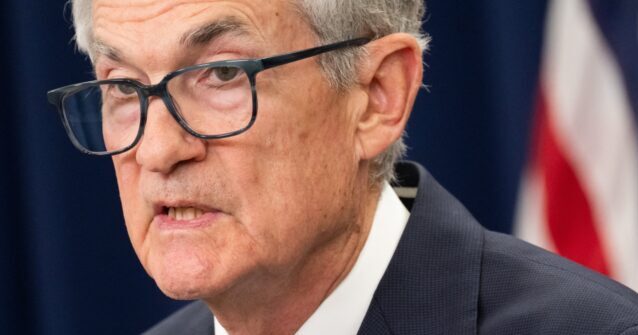The Federal Reserve delivered an unexpected blow to hopes for lower borrowing costs in the future, projecting higher inflation and higher interest rates in updated forecasts released Wednesday. While policymakers left their benchmark rate unchanged and signaled that they may cut in the second half of this year, forecasts of officials showed they expect fewer cuts next year and the year after that.
The central bank held the federal funds target at 4.25 to 4.50 percent, its level since the December rate cut. But the accompanying economic projections revealed rising concern that inflation is not receding fast enough—and that rates may need to stay elevated to keep it in check.
Officials now forecast that the Fed’s preferred inflation gauge, the personal consumption expenditures (PCE) index, will climb to 3.0 percent by the end of 2025. Core PCE inflation, which excludes food and energy, is expected to reach 3.1 percent. Both represent notable upward revisions from the March forecast, which anticipated 2.7 percent and 2.8 percent respectively.
“We expect a meaningful amount of inflation to arrive in the coming months,” Fed chairman Jerome Powell said. “We have to take that into account.”
This came as a surprise to many Fed watchers because recent inflation data has come in softer than expected, with prices holding steady or rising only at a slow rate. The annualized quarterly pace of the PCE inflation is 1.5 percent, below the Fed’s two percent inflation target, and core PCE inflation is two percent, according to the Federal Reserve Bank of Cleveland.
Despite the Fed’s rising inflation concerns, the Fed also raised its forecast for unemployment, now expecting it to rise to 4.5 percent this year from the current 4.2 percent and the earlier forecast of 4.4 percent. That combination—higher prices and weaker job growth—explains the hesitancy of Fed officials, who are wary of cutting too early and reigniting inflation, yet also cautious of allowing economic conditions to deteriorate.
The new projections show a widening split among the Fed’s 19 policymakers. Ten project at least two rate cuts in 2025, consistent with a soft-landing narrative. But seven now expect no cuts at all, up from four in March. The median forecast keeps the federal funds rate at 3.9 percent at year-end, unchanged from the previous estimate but now reflecting a narrower path to easing.
This was the first set of projections issued since President Trump’s April 2 announcement of broad new tariffs, a move that has already lifted U.S. average duty levels to their highest in nearly a century. While the official Fed statement made no direct reference to the tariff policy, the upward drift in inflation expectations suggests they may be bracing for supply-side pressures to linger.
Powell himself discussed tariffs several times in his post-meeting press conference on Wednesday, making it clear that the increase in expected inflation was due to the Fed’s view of tariffs as inflationary.
“Increases in tariffs this year, are likely to push up prices and weigh on economic activity,” says Federal Reserve Chair Jerome Powell
Powell added that “everyone I know is forecasting a meaningful increase on prices from tariffs because someone has to pay for the tariffs.”
Earlier in the day, President Trump criticized the Fed’s policy of holding rates steady and called for sweeping rate cuts of up to 250 basis points. He argued that looser monetary policy would make it easier to refinance government debt and spur investment. Trump has long contended that inflation concerns are overblown and has predicted that rates will drop quickly once he appoints a new Fed chair next year.
Inside the Fed, however, opposition to tariff policy and fear that it could ignite inflation appears to prevail. Even though inflation data since February has shown surprising moderation, policymakers remain focused on ensuring inflation expectations remain anchored. The experience of the past four years—where prices surged well above target—has made the Fed more sensitive to even modest signs of persistent price pressure. As well, many Fed policymakers appear convinced tariffs will be inflationary despite the evidence that tariffs did not push up consumer prices in the first Trump administration and have not increased inflation in the second.
Labor market indicators, meanwhile, have softened. Job growth has slowed, long-term unemployment claims have risen, and revisions to prior employment data have turned negative. Nevertheless, some indicators of financial conditions remain relatively loose: corporate borrowing is strong, credit spreads are tight, and equities are near record highs—factors that may give the Fed confidence it can keep rates elevated without risking a severe contraction.
Looking further out, the Fed now sees interest rates staying higher for longer. The median forecast for the federal funds rate is 3.6 percent in 2026 and 3.4 percent in 2027—both slightly above prior estimates. The long-run neutral rate remains anchored at 3.0 percent.
In effect, the central bank is signaling that while it may still cut rates this year, those cuts—if they come—will be modest and contingent on further declines in inflation. For markets and borrowers alike, the message was clear: the era of easy money is not returning anytime soon.
Read the full article here


